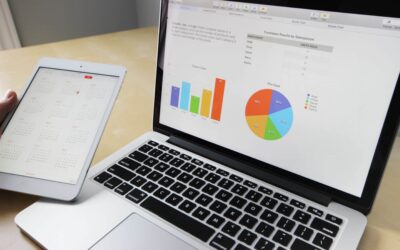The importance of data has led to a growing number of data sources and reporting tools within a given college or university. Often, this growth happens little by little, with no real strategy behind it. This is a problem. A school must have a widespread, clearly understood data management and reporting strategy. Only then, can that all-important data provide the competitive edge to attract and retain students, and provide them with the experience they come to expect from today’s Higher Education institutions.
Unchecked growth
Over the last decade, as technology has improved, data needs have increased, and college staff has become more tech savvy, there has been a rise in the number of decisions around data sources and reporting tools made at the individual and departmental levels.
With an increase in the number of applications in use across campus, or campuses, chances are the institution is lacking a central process to manage all that data. Trying to then locate all of the data sources and reporting tools out there, as well as understanding the intended data usage behind it all, can be a daunting task to an IT department, let alone a single IT administrator.
How does your data garden grow?
So just how does this growth happen? Departments, and the personnel within them, typically know what data is needed and the reports required to convey it all. The issues tend to arise when they are asked to report on data they don’t usually access, and therefore is not readily available to them.
In this scenario, a user may have no idea where to locate the needed data, or they know outright that the system they’re working with doesn’t contain it. The user becomes frustrated that they can’t do their job. They may take the issue to their manager and together decide to take whatever steps are necessary to get that data in their hands.
As scenarios like this unfold across an institution – especially when there is no known data strategy to guide them – you begin seeing countless applications and data sources popping up. These individuals or departments were being asked to provide necessary data, so they did what they needed to do to access and report that information to the key decision makers.
Centralizing it all. Where to start?
As mentioned earlier, the task of locating and understanding all the data sources, reporting tools, and data requirements out there is a daunting one – regardless of how many members of the IT team may be taking it on. Still, it is something that needs to be done if you want to centralize everything under a common data management strategy and plan.
So, where do you start?
List Building
The best way to know what data sources and reporting tools are being used is to ask. Schedule time with each member of a given department and interview them. Then use the feedback from those interviews to build lists of what sources and tools are being used.
This process can be enlightening, as it can easily uncover 20 to 30 separate applications being used to access the same data stored in different sources.
Dig Deeper
Putting together a widespread, comprehensive data strategy and plan isn’t just about consolidating data sources and reporting tools. It’s about discovering and understanding what data is needed, by whom, why they need it, and how do they need to report on that data.
This likely means a second round of interviews. This time, probing deeper with questions such as:
- How is the data being used?
- Who has access to the data? (Who needs to have access?)
- Is the data secure?
- Who determined the format of the report?
- Is the report accurate?
- Where is the data located? (Is it from a central location, an individual spreadsheet, or a workstation?)
- Are decisions being delayed, withheld, or reversed because people are questioning the data?
Of course, there are many more questions that could – and should – be asked. The discovery process is a great step toward uncovering and understanding how data is used at your institution and the problems that exist today. It should be noted that it isn’t always about the negative. This same discovery process can also uncover successes and best practices that should be retained.
Once the interviews are complete, and you’ve compiled your lists and gathered your data, you can begin sorting through it all. The end goal: determine what needs to change so that the institution has a unified, improved process for making data driven decisions to support its strategic goals.
Definitely define
While centralizing the data and where it’s stored, and getting everyone to use the same reporting tools where possible, are key to an institution-wide data management strategy, there is another important aspect: data definitions and business rules.
Everyone should know that they are subject to the same data definitions and business rules as everyone else at the school. (e.g. Everyone should understand how a “full-time student” is defined.) In addition, they should also know how to access the central location where those definitions and rules are maintained. Providing data definitions will ensure that everyone understands the data in the same way. Similarly, business rules make them aware of who has access to certain data. This single source of truth is a key contributor to the competitive edge data provides.
Data definitions and business rules should be established and maintained by a dedicated group of individuals from various departments. They, in turn, will need dedicated resources and time to both establish and maintain it all.
Conclusion
It is important to know that a data management strategy, and supporting plan, provides your institution numerous advantages. Foremost is that data is an asset. When it is accurate, trusted, and presented in a way that is easily understood, it provides key decision makers with vital information they can use to bring your institution closer to achieving its goals.





0 Comments
0 Comments